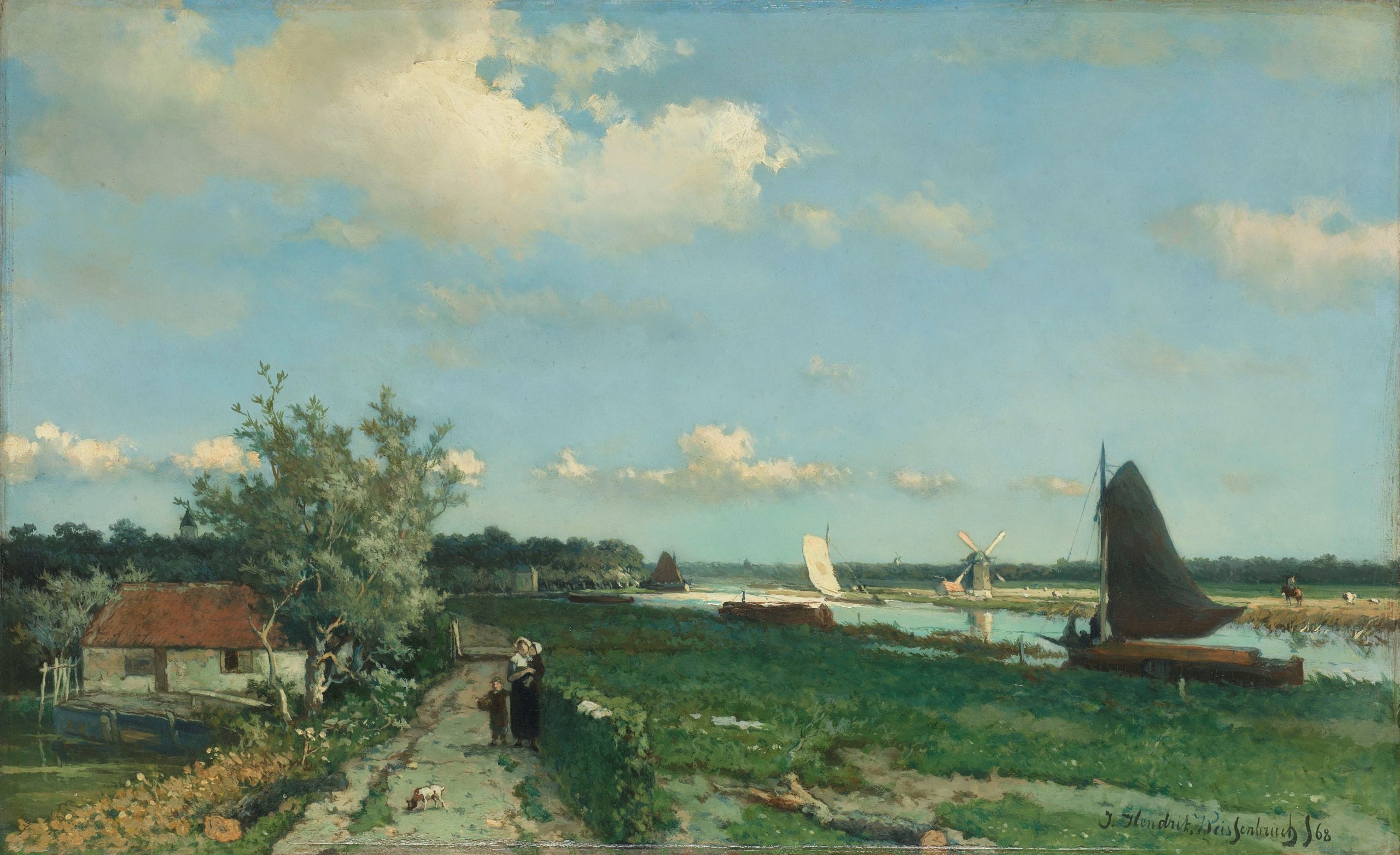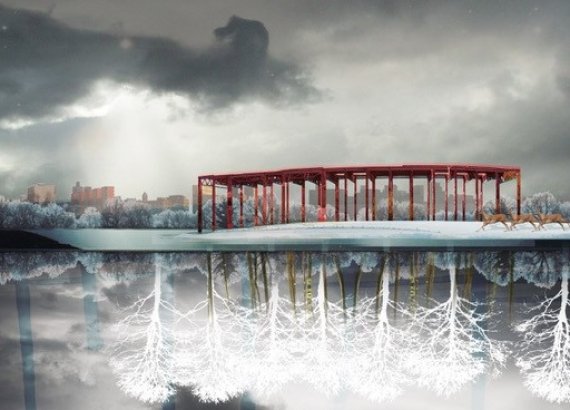© Jančovičov. Apparant Mirroring. An example of a portal landscapeDerived from the Latin sub limen (below the threshold), the word sublime refers in this context to the subconscious impact of the landscape. ‘It is really a kind of mindfulness,’ explains Roncken. ‘You are in a natural environment and you get something out of it. That usually goes smoothly. You read a landscape and you know how you should use it. If you come to a red traffic light, for instance, you know you should wait. The place communicates that, and you get the message. Until it goes wrong. And that is the sublime experience. The routine, standard pattern, gets broken and you cannot relate to the environment. That, at least, is my version of the sublime, which is relevant to the challenges facing us today, such as designing megacities, energy landscapes and nature-inclusive agriculture.’

Illustration Rijksmuseum – This 1868 painting by Johan Hendrik Weissenbruch shows a legible landscape, says landscape architect Paul Roncken.
Non-places
Roncken dissects this sublime experience for us. His analysis delivers six distinct landscape archetypes: legible, horrific, neglected, portal, liminal and unpresentable.
A ‘neglected’ landscape, says Roncken, is one we can’t do anything with. ‘These are the non-places, like the back of a petrol station. In effect, it is the opposite of a legible landscape. But those places are of use to a society or as a niche biotope.’ Portal landscapes are Roncken’s favourites. ‘These are landscapes which form cross-connections between different experiences. You smell a certain smell at a place, and that reminds you of your grandmother’s soup. That changes the way you experience the place. This is probably the most creative form of the sublime experience.’
Fictional dialoge
Roncken’s thesis is a monograph – an academic treatment – on the sublime. As such, it is not your standard collection of academic articles. This is unusual enough in Wageningen, but what really makes his book stand out is the collection of fictional letters and theatrical dialogues it contains. These include imaginary dialogues about the sublime between philosophers such as Immanuel Kant, Longinus and Edmund Burke.
At some point, my supervisors were convinced but my examining committee blocked it.
Paul A. Roncken
At first, this approach was a bridge too far. Roncken: ‘At some point, my supervisors were convinced but my examining committee blocked it. They wouldn’t even read it. That brought the project to a standstill for two years.’
A solution was eventually found through the layout. The dialogues were placed after the various parts of the thesis like illustrations. Roncken: ‘I wasn’t allowed to present any new facts in them. The letters ended up on dark grey pages halfway through the book.’
According to Roncken, the letters and dialogues are essential to the thesis. ‘In those forms I can have the freedom of a designer. The designer’s attitude is to look for alternative realities, in the sense of: but what if it had been different?’
If you let a natural system evolve, these six archetypes will appear of their own accord.
Paul A. Roncken
So what do those six different flavours of landscape mean for the practice of design? According to Roncken, landscapes should be designed so that all six kinds of experience of the sublime come into play. In this, he rebels against the established approach to design, in which people’s preferences are a limiting factor in designing the landscape. ‘So you should design landscapes in ways that build in fluctuation. If you let a natural system evolve, these six archetypes will appear of their own accord. Leave it to nature.’
Roncken calls this ‘serious landscaping’. ‘Stop making dead parks and squares. Stop designing to a blueprint and create the landscapes nature needs. I call that designing for a broader clientele. Not just designing for humans, but also for animals, plants and micro-organisms. That may not always produce the most aesthetically pleasing landscape for humans, but it will produce meaningful landscapes with better ecosystems and more biodiversity.’
Besides his thesis, Paul Roncken created a website: storybuilder.jumpstart.ge/shades-of-sublime. Here he portrays the six landscape types using illustrations from children’s books.



